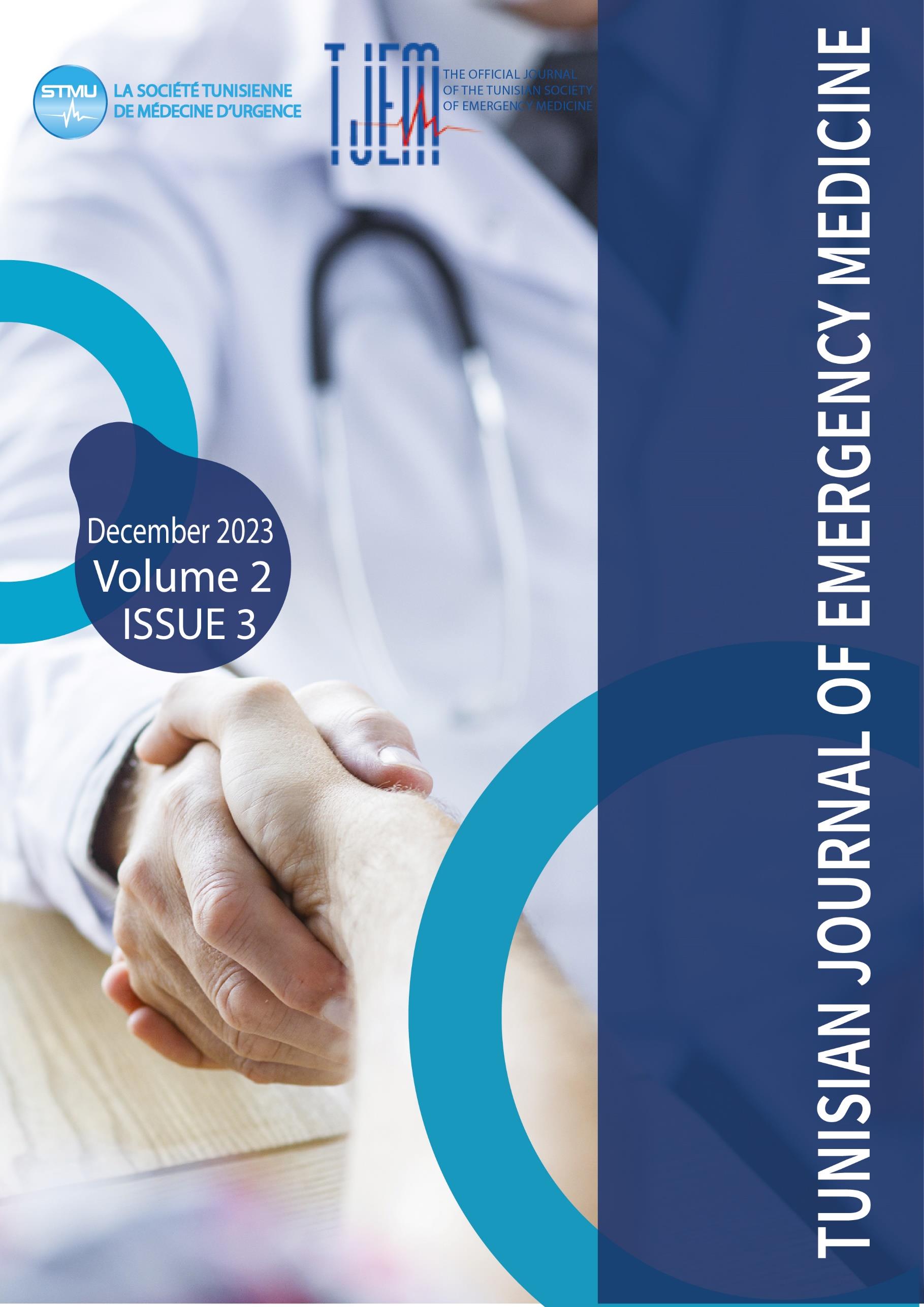Predicting diabetic ketoacidosis severity score: proposal of a therapeutic strategy adapted to emergency department
Houda Ben Soltane, Marwa Talbi , Mariem Khrouf, Ahmed Guesmi, Zied Mezgar, Mehdi Methamem.
DOI:
https://doi.org/10.0000/wh9arp45Keywords:
Diabetic Ketoacidosis, Score, Outcomes, EmergencyAbstract
Background: We investigated independent severity predictors of diabetic ketoacidosis and developed a prediction rule for emergency physicians to classify patients into severity groups.
Methods: This study was done in a university-affiliated medical center. Consecutive adult patients (>15 years old) visiting the emergency department (ED) between July 2016 and July 2018 were enrolled when they met the criteria of DKA. Hospitalization in an intensive care setting was the primary endpoint.
Results: We included 176 patients diagnosed with DKA in the ED. We found 7 independent severity predictors: Altered mental status, venous pH, bicarbonate level, blood glucose, Serum creatinine, H4 serum chloremia and effective serum osmolality at admission. After assigning weights to each predictor, we developed a predicting DKA severity score that stratifies patients into groups: low severity (score<3): treatment in a general ward or the ED; and high (score≥3): treatment in the ICU. The area under the curve for the rule was 0.863.
Conclusions: The score is a simple and rapid rule for predicting severity and classifying patients with DKA.
Downloads
Published
Issue
Section
License
Copyright (c) 2023 Tunisian Journal of Emergency Medicine

This work is licensed under a Creative Commons Attribution-NonCommercial-ShareAlike 4.0 International License.
How to Cite
Similar Articles
- Dorra Loghmari , Epidemiological and prognostic factors associated with road traffic accidents occurring in the Center East of Tunisia. , Tunisian Journal of Emergency Medicine: Vol. 2 No. 3 (2023): TJEM Vol2 Issue3
- Olfa chakroun-walha, Acute myocarditis complicating severe chloralose intoxication: A case report , Tunisian Journal of Emergency Medicine: Vol. 2 No. 3 (2023): TJEM Vol2 Issue3
- Houda BEN SOLTANE, Neurologic manifestations of infective endocarditis , Tunisian Journal of Emergency Medicine: Vol. 2 No. 3 (2023): TJEM Vol2 Issue3
- Hanen GHAZELI, De Winters ST-T syndrome: an early sign of STsegment elevation myocardial infarction (A case report) , Tunisian Journal of Emergency Medicine: Vol. 2 No. 2 (2022): TJEM Vol2 Issue2
- Management of mass disasters related to the sinking of clandestine immigrants , Tunisian Journal of Emergency Medicine: Vol. 2 No. 2 (2022): TJEM Vol2 Issue2
- Olfa chakroun-walha, Orchis satyrium; an intoxication by a medicinal herb , Tunisian Journal of Emergency Medicine: Vol. 2 No. 2 (2022): TJEM Vol2 Issue2
- Olfa chakroun-walha, Overview of the post-night shift syndrome in the COVID-19 pandemic era: predictors in a North African sample of physicians , Tunisian Journal of Emergency Medicine: Vol. 2 No. 3 (2023): TJEM Vol2 Issue3
You may also start an advanced similarity search for this article.
Most read articles by the same author(s)
- Houda BEN SOLTANE, A total volvulus of the small intestine on malrotation A total volvulus of the small intestine on malrotation A total volvulus of the small intestine on malrotation A total volvulus of the small intestine on malrotation A total volvulus of the small intes , Tunisian Journal of Emergency Medicine: Vol. 2 No. 3 (2023): TJEM Vol2 Issue3
- Houda BEN SOLTANE, Neurologic manifestations of infective endocarditis , Tunisian Journal of Emergency Medicine: Vol. 2 No. 3 (2023): TJEM Vol2 Issue3
- Houda BEN SOLTANE, Evaluation of the prescription of additional examinations in emergency departments , Tunisian Journal of Emergency Medicine: Vol. 2 No. 2 (2022): TJEM Vol2 Issue2
- Houda BEN SOLTANE, Predicting diabetic ketoacidosis severity score: proposal of a therapeutic strategy adapted to the emergency department , Tunisian Journal of Emergency Medicine: Vol. 2 No. 2 (2022): TJEM Vol2 Issue2

